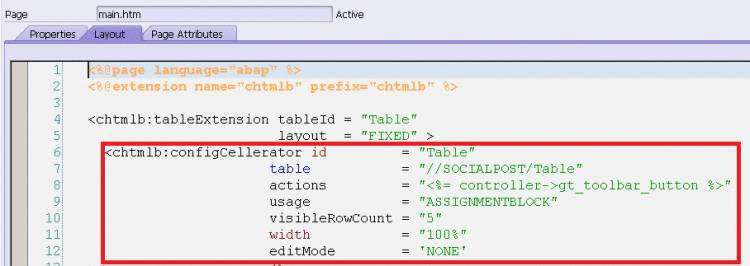前言
本文主要是笔者小结 WWDC2017 中 《What's New in Swift》的 Session ,其中也掺杂了些《What’s New in Foundation》,仅作记录。
下面步入主题。
私有访问控制("Private" Access Control)
SE-0169
在 Swift 4 中,private 修饰的属性可以在 Extension 中访问了,再也不要用 fileprivate 修饰属性了?。
下面我们来区分 Swift 3 与 Swift 4 中的区别。
Swift 3:


Swift 4:
类与协议(Class and Subtype Existentials)
SE-0156
在 Swift 3 中,有些童鞋使用代理时,无法同时继承类和协议

Swift 4 中,针对此处进行了改进,直接上 WWDC17 示例代码:
func shareEm(control: UIControl & Shakeable) {control.share()
}protocol Shakeable {func share()
}extension Shakeable {func share() {print("starting share!")}
}extension UIButton: Shakeable { }extension UISlider: Shakeable { }
Smart KeyPaths
SE-0161
在 Swift 4 中新增了一种 Key-Path 表达式,该表达式可用于 KVC & KVO 中的 APIs,格式如下:
\[Type Name].[Property Name]
示例代码如下:
struct SomeStructure {var someProperty: Int
}func smartKeyPath() {let s = SomeStructure(someProperty: 12)let keyPath = \SomeStructure.somePropertylet value = s[keyPath: keyPath]print(value)// value is 12
}
如果在上下文中,能隐含的推断出其类型,那么 Key-Path 表达式中的 Type Name 可以省略,即
\.[Property Name]
如:
@objcMembers class SomeClass: NSObject {dynamic var someProperty: Intinit(someProperty: Int) {self.someProperty = someProperty}
}var observe: NSKeyValueObservation?
let c = SomeClass(someProperty: 10)func smarkKVO() {observe = c.observe(\.someProperty) { object, change in// ...print(object.someProperty, change)}c.someProperty = 10
}
Archival & Serialization
SE-0166
Excerpt From: Apple Inc. “Using Swift with Cocoa and Objective-C (Swift 4 beta).
我们以下面这段 JSON 为例,来看 Swift 4 中针对 JSON 进行解析的新方法
{"name": "Banana","points": 200,"description": "A banana grown in Ecuador.","varieties": ["yellow","green","brown"]
}
首先,我们要遵循 Codable 协议:
struct GroceryProduct: Codable {let name: Stringlet points: Intlet description: Stringlet varieties: [String]
}
使用 JSONDecoder 进行解析:
let json = """{"name": "Banana","points": 200,"description": "A banana grown in Ecuador.","varieties": ["yellow","green","brown"]}
""".data(using: .utf8)!let decoder = JSONDecoder()
let banana = try! decoder.decode(GroceryProduct.self, from: json)print("\(banana.name) (\(banana.points) points): \(banana.description)")
// Prints "Banana (200 points): A banana grown in Ecuador.
Encoders
SE-0167
本节主要展示 JSONEncoder 编码,直接上代码:
struct University: Codable {enum Level: String, Codable {case one, two, three}var name: Stringvar founds: Intvar type: Level
}func codableTest (_ obj: University) {let encoder = JSONEncoder()let decoder = JSONDecoder()guard let data = try? encoder.encode(obj) else { return }guard let jsonData = try? decoder.decode(University.self, from: data) else { return }print("jsonData:", jsonData)
}
关于字符串(String)
字形群集(Grapheme Cluster)
在 Swift 4 中,修复了字形群集长度计算的一些问题,如 emoji 表情。关于字形群集或者 Unicode 编码概念生疏的童鞋可以看笔者之前写的两篇文章 《字符编码(一)》、《Swift3.0 中 Strings/Characters 闲聊》。下面我们来看看 WWDC17 上的的示例:
var family = "?"
family += "\u{200D}?"
family += "\u{200D}?"
family += "\u{200D}?"print("\(family):\(family.count)")
// result --> ????:1
在之前 family.count 会等于 4(u{200D} 是一个零宽度的 joiner)。
笔者在 Xcode 9 beta1 上运行,选择 Swift 编译语言版本时,测试结果无效,只有在 Xcode 8 测试时 family.count = 4。

字符串改版(String Revision)
SE-0163
在 Swift 2 中,String 的集合这一特性被遗弃,在 Swift 3 中,String 也没有遵守集合的相关协议(如:RangeReplaceableCollection, BidirectionalCollection),因此自 Swift 2 起,String 不是一个集合,而是把这一特性赋予给了 String 的一个属性 --> characters (A view of the string’s contents as a collection of characters.),该属性是 String.CharacterView 类型,并且遵守 RangeReplaceableCollection 协议。
extension String.CharacterView : RangeReplaceableCollection {···}
因此我们在遍历或者操作 String 时,经常会这么写:
Excerpt From: Apple Inc. “The Swift Programming Language (Swift 3.1).” iBooks. https://itunes.apple.com/us/b...
for character in "Dog!?".characters {print(character)
}
// D
// o
// g
// !
// ?
.characters.····。
但,直至 Swift 4,String 又开始遵循集合相关协议,从此可以这么写了:
for character in "Dog!?" {print(character)
}
// D
// o
// g
// !
// ?
当然在 Swift 4 中又出现了一个新的结构体 Substring,Substring 无法直接赋值给 String 的。

关于 Substring 与 String 之间的转换可以这么写:
let label = UILabel()
let superStr = "tingxins"
let subStr = superStr.prefix(4)
label.text = String(subStr)
print(subStr)
字符串跨行写法(Multi-Line String Literals)
SE-0168
如果字符串需要跨多行,可以这么写:
Excerpt From: Apple Inc. “The Swift Programming Language (Swift 4).”.
let quotation = """
The White Rabbit put on his spectacles.
"Where shall I begin, please your Majesty?" he asked."Begin at the beginning," the King said gravely, "and go on
till you come to the end; then stop."
"""
没错,三对引号。
如果字符串本身包含三个连续的 ‘"""‘ 引号时,可以采用反斜杠进行转义处理(),如:
let threeDoubleQuotes = """
Escaping the first quote \"""
Escaping all three quotes \"\"\"
"""
单面区间语法(One-Sided Ranges)
SE-0172
在 Swift 3 中,区间运算符只有两种:闭区间运算符(Closed Range Operator)、半闭区间运算符(Half-Open Range Operator)。在 Swift 4 中,又新增了一种更加简单方便的区间运算符-->单面区间(One-Sided Ranges)。
Excerpt From: Apple Inc. “The Swift Programming Language (Swift 4).
你可以这样写:
let names = ["Anna", "Alex", "Brian", "Jack"]for name in names[2...] {print(name)
}
// Brian
// Jackfor name in names[...2] {print(name)
}
// Anna
// Alex
// Brian
当然也和结合半闭区间运算符,可以这么写:
for name in names[..<2] {print(name)
}
// Anna
// Alex
判断区间是否包含&#xff0c;可以这么写&#xff1a;&#xff08;for语句中要注意死循环哈&#xff09;
let range &#61; ...5
range.contains(7) // false
range.contains(4) // true
range.contains(-1) // true”
WWDC17 示例代码&#xff1a;

序列协议&#xff08;Sequence&#xff09;
SE-0142
在 Swift 3 中&#xff0c;假设我们要为 Sequence 扩展一个方法&#xff0c;要这么写&#xff1a;
extension Sequence where Iterator.Element: Equatable {func containsOnly(_ value: Iterator.Element) -> Bool {return contains { (element) -> Bool inreturn element &#61;&#61; value}}
}
但在 Swift 4 中&#xff0c; 针对 Sequence 做了一些小改进&#xff0c;使我们代码更加轻便&#xff0c;看起来更加清爽&#xff1a;
extension Sequence where Element: Equatable {func containsOnly(_ value: Element) -> Bool {return contains { (element) -> Bool inreturn element &#61;&#61; value}}
}
这是怎么实现的呢&#xff1f;因为在 Swift 4 中&#xff0c;我们在声明一个 associatedtype 的 placeholder 时&#xff0c;我们可以使用 where 语句了。
下面我们来对比一下 Swift 3 与 Swift 4 中 Sequence 的区别&#xff1a;
在 Swift 3 中 Sequence 协议是这么写的&#xff1a;

在 Swift 4 中进行改进后&#xff0c;是这么写的&#xff1a;

对比看完后&#xff0c;想必读者一目了然。
下面针对 associatedtype 中使用 where 语句&#xff0c;我们再来看个例子&#xff1a;
Excerpt From: Apple Inc. “The Swift Programming Language (Swift 4).
protocol Container {associatedtype Itemmutating func append(_ item: Item)var count: Int { get }subscript(i: Int) -> Item { get }associatedtype Iterator: IteratorProtocol where Iterator.Element &#61;&#61; Itemfunc makeIterator() -> Iterator
}
如果在 Swift 3 下写&#xff0c;Xcode 会出现这样的编译错误:

有了上面这些特性后&#xff0c;我们在使用 Swift 4 时&#xff0c;可以省略一些冗余约束&#xff0c;这里直接上 WWDC17 的示例代码&#xff1a;
在 Swift 3 中&#xff0c;是这样写的&#xff1a;


在 Swift 4 中&#xff0c;现在我们可以这么写&#xff1a;


泛型下标&#xff08;Generic Subscripts&#xff09;
SE-0148
在 Swift 4 中&#xff0c;现在支持泛型下标了&#xff0c;直接上代码&#xff1a;
Excerpt From: Apple Inc. “The Swift Programming Language (Swift 4).
extension Container {subscript
}
上述代码我们为 Container 添加了下标取值能力&#xff0c;在这个泛型下标中有 3 个约束&#xff1a;
泛型参数 Indices 遵守 Sequence 协议
indices 是 Indices 类型的一个实例
泛型 where 语句筛选 Indices.Iterator.Element 为 Int 类型
关于整型&#xff08;Protocol-oriented integers&#xff09;
SE-0104
字典与集合&#xff08;Dictionary & Set enhancements&#xff09;
SE-0165
Number 对象桥接&#xff08;NSNumber bridging and Numeric types&#xff09;
SE-0170
Swift 3 中&#xff0c;NSNumber 转换有个 Bug&#xff0c;如&#xff1a;
let n &#61; NSNumber(value: UInt32(543))
let v &#61; n as? Int8
// v is 31

Swift 4 中已修复&#xff1a;

可变集合&#xff08;MutableCollection&#xff09;
SE-0173
现在可变集合增加了一个方法&#xff0c;我们可以直接使用 swapAt 方法&#xff0c;而非 swap 。
let university0 &#61; University(name: "Qsting", founds: 1870, type: .one)
let university1 &#61; University(name: "tingxins", founds: 1870, type: .one)
var mutableCollection &#61; [university0, university1]print(mutableCollection)
mutableCollection.swapAt(0, 1) //交换数组中0、1元素的位置
print(mutableCollection)
Change filter to return Self for RangeReplaceableCollection
SE-0174
参考链接
https://developer.apple.com/v...
https://github.com/apple/swif...
https://github.com/ole/whats-...
https://developer.apple.com/l...
https://developer.apple.com/l...
广告
欢迎关注微信公众号








 京公网安备 11010802041100号
京公网安备 11010802041100号